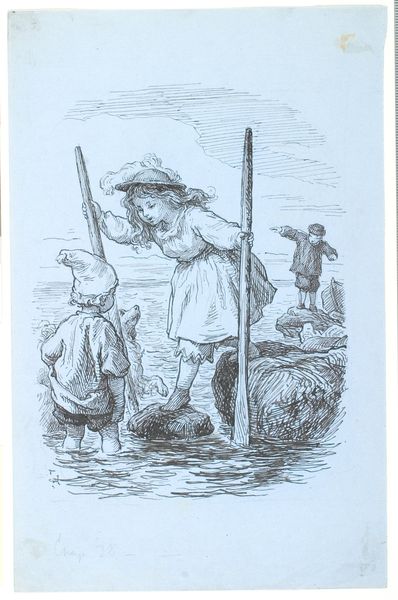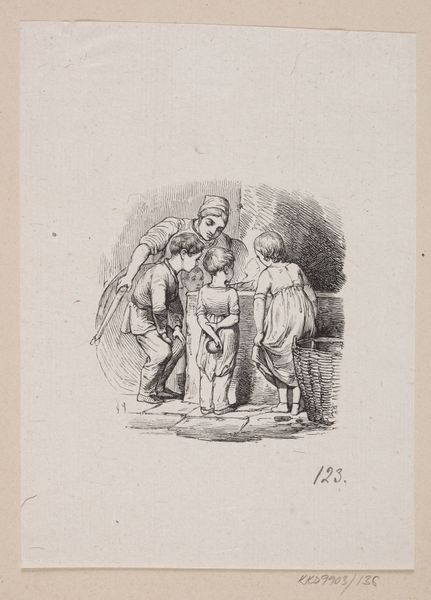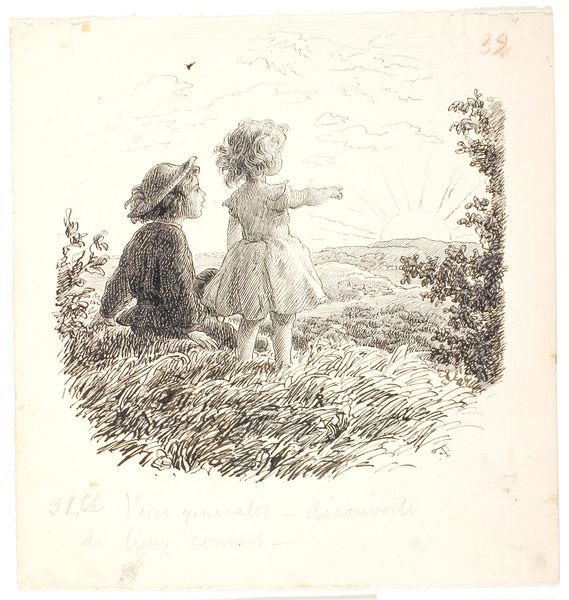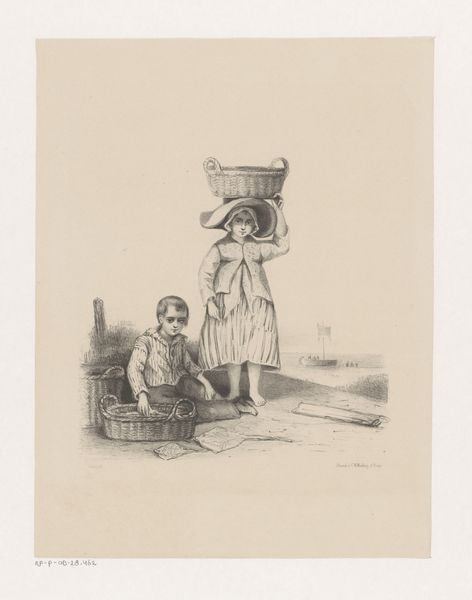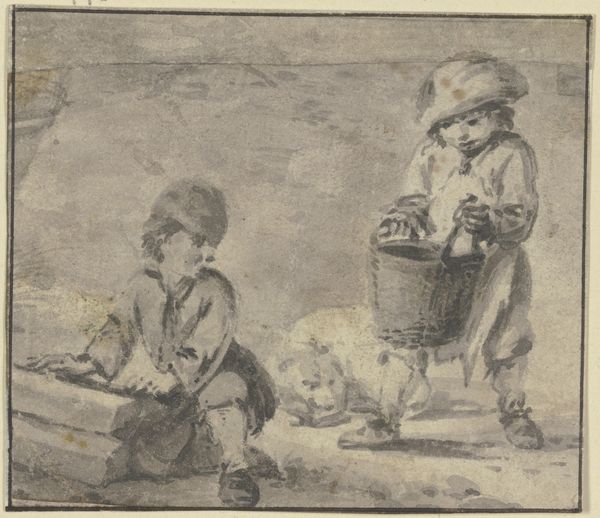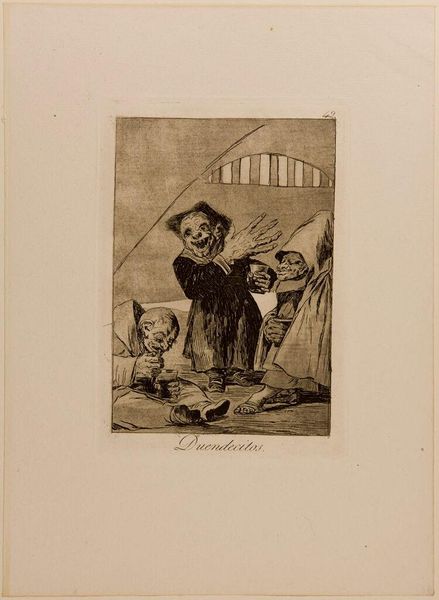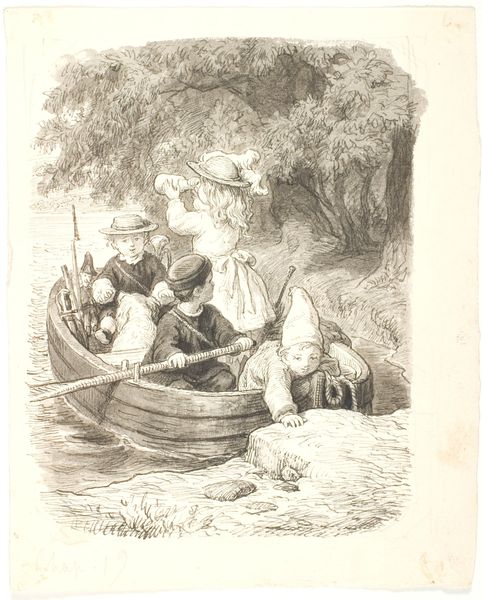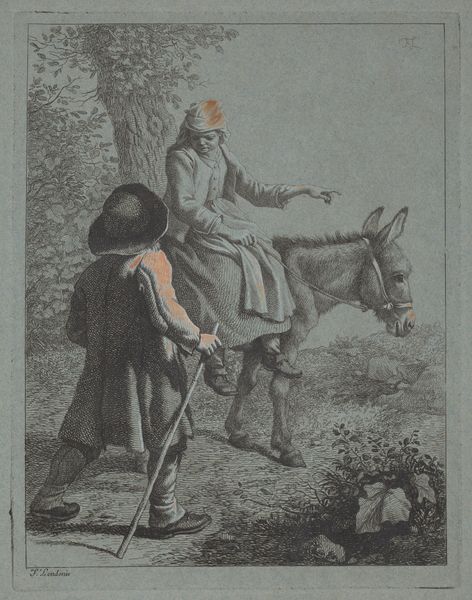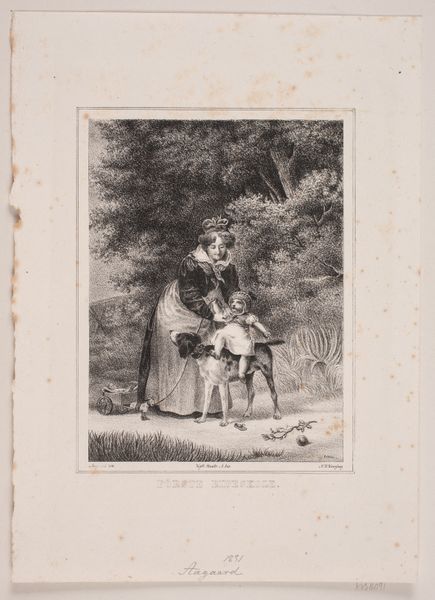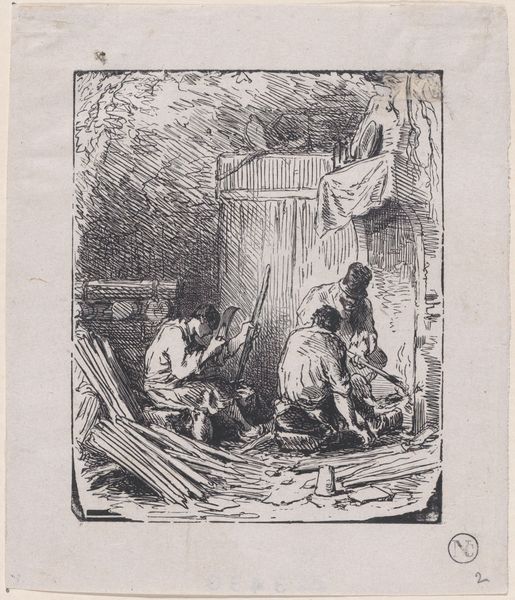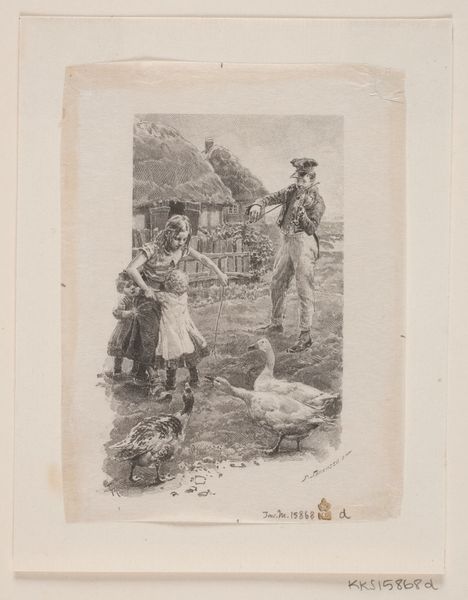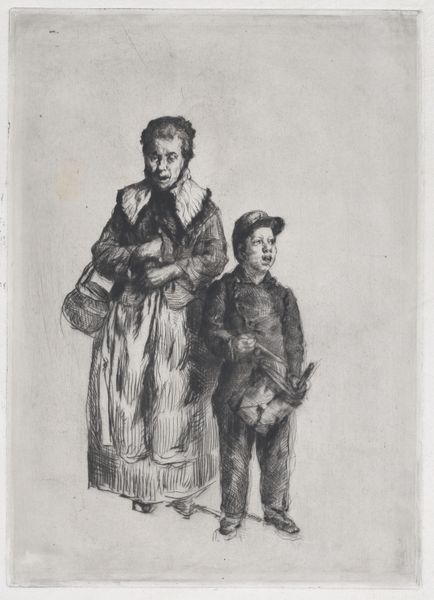
drawing, lithograph, print, graphite
#
drawing
#
lithograph
# print
#
landscape
#
charcoal drawing
#
figuration
#
pencil drawing
#
romanticism
#
19th century
#
graphite
#
genre-painting
#
graphite
Dimensions: 582 mm (height) x 423 mm (width) (bladmaal)
Curator: Welcome. Before us is David Monies’s 1838 lithograph, "To grædende børn," or "Two Crying Children." The work now resides at the SMK, the Statens Museum for Kunst. Editor: What strikes me is the almost palpable gloom, a certain stillness achieved through tonal gradations. Even the overcast sky seems to weigh down on the children. Curator: Absolutely. Consider the lithographic process itself; the grinding and preparation of the stone, the drawing with greasy crayons, the acid etching, and the careful printing. Monies likely collaborated with a skilled printer for the final image. We must also remember lithography's role in democratizing art, making images like this accessible to a wider audience, connecting it with 19th-century ideas of childhood innocence. Editor: The composition leads the eye from the dark foliage on the left across the field towards the background figures, subtly guiding the viewer through the scene, using the reflections in the water as a strong diagonal compositional element. I think there's a visual language at play with the girl's headscarf against her downcast look creating a subtle geometric motif. Curator: The girl's traditional attire tells its own story about rural Danish society and labor practices. Note how the basket she carries signifies potential involvement in economic activity, and consider how children like these contributed to household economies. These are not idealized portraits but instead images embedded in very real working class experiences. Editor: I disagree that we cannot view this romantically. There is a melancholy permeating the tonal contrasts and overall structure, creating the symbolic representation of a mood and experience. The boy's small hand on her arm provides an emotional tension, an intriguing dynamic played against the neutral background that evokes deeper philosophical reflections. Curator: Interesting perspective. Analyzing Monies’ print prompts contemplation of how the very labor-intensive medium can transform social issues and economic realities into visual imagery. It allows one to question prevailing ideas regarding child labor within the social and material landscape of 19th century Denmark. Editor: Precisely! The beauty emerges when closely interpreting form and how it evokes and echoes its period in ways that trigger meaningful interpretations and personal meaning for each viewer.
Comments
No comments
Be the first to comment and join the conversation on the ultimate creative platform.
